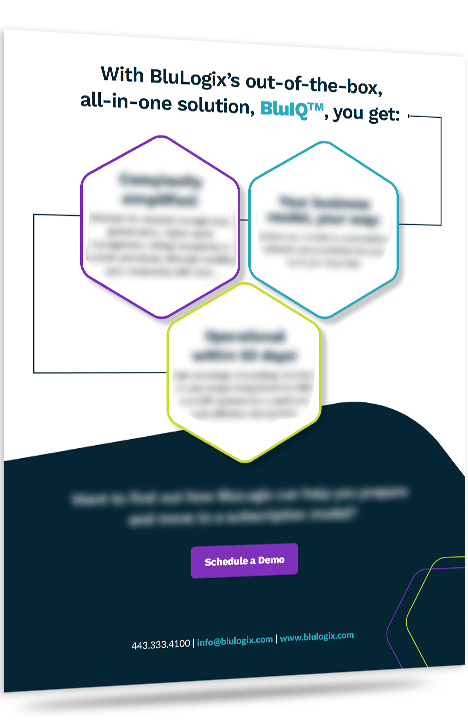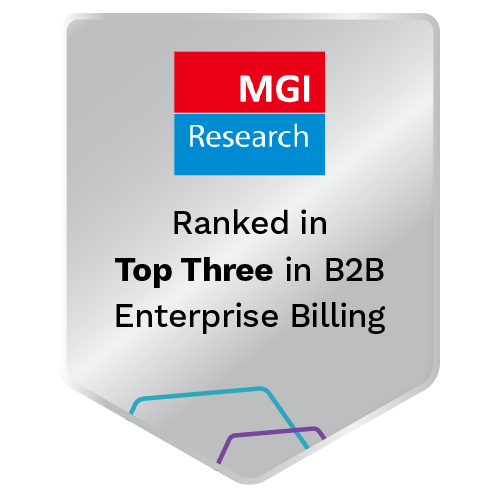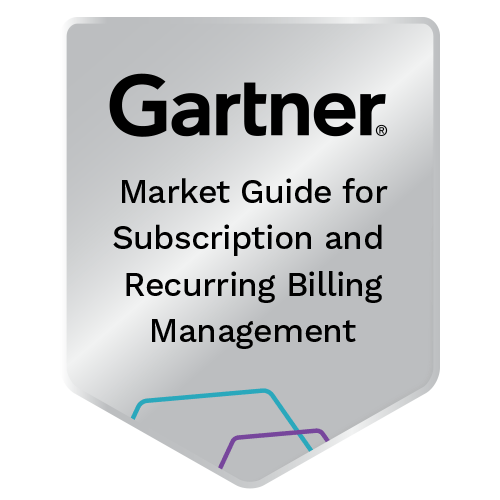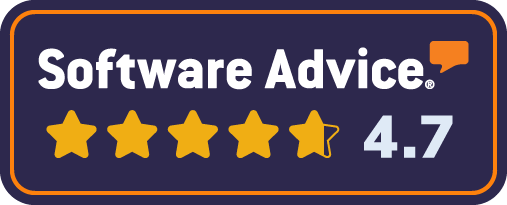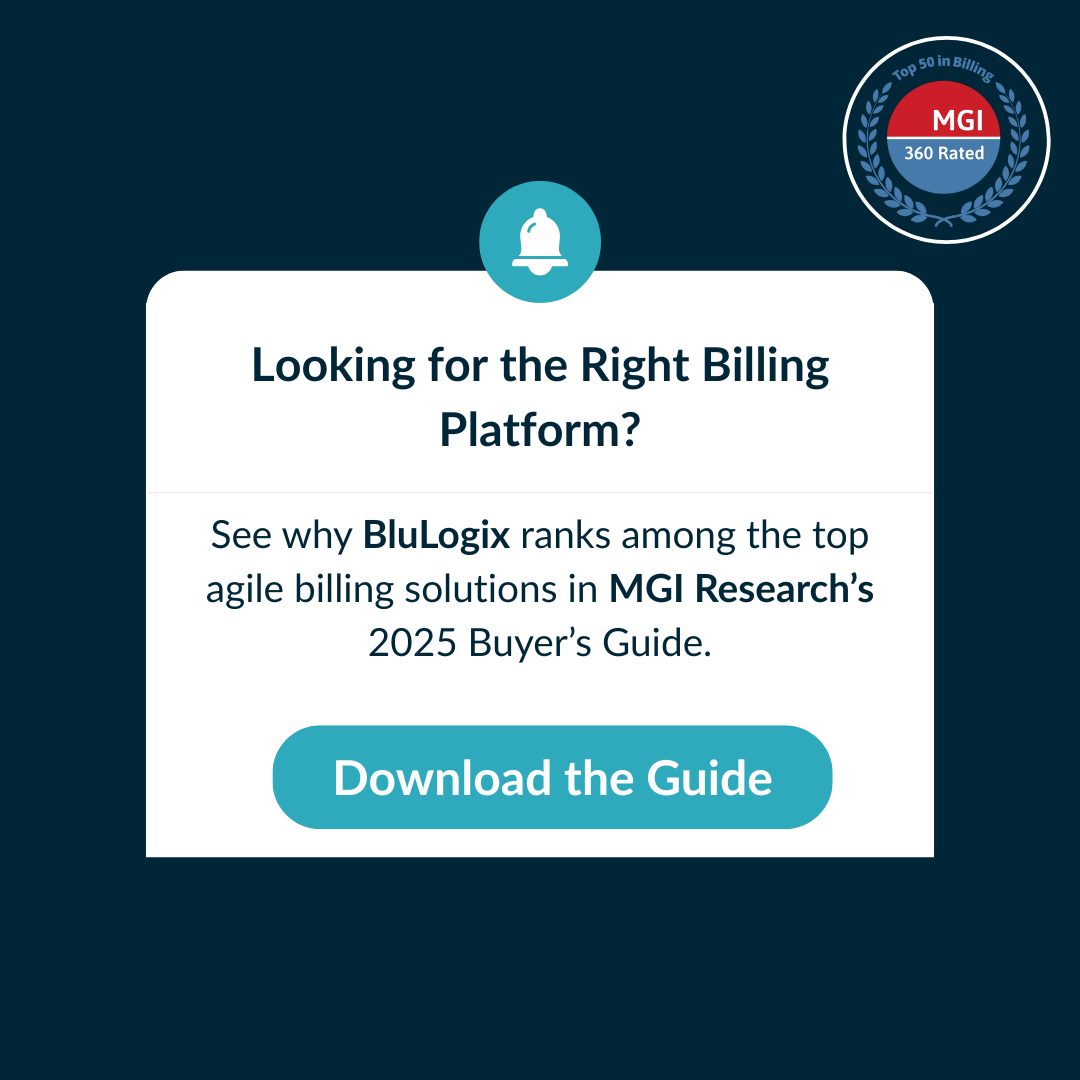Blulogix Whitepaper
5 Questions to Answer Before Moving to a Subscription Model
Table of Contents
This happens because, unless your business was originally designed for SaaS, you’ll need to adjust numerous processes. Further, the SaaS platforms force you to compromise what you’ve already built in your day-to-day operations. Finding an out-of-the-box solution that’s cost- effective and that can deploy quickly for your unique type of operation doesn’t really exist.
And, there’s the rub. You’re ready to commit but as soon as you do, you realize the challenges of the software are incredibly complex and end up making more work for everyone on your team. By understanding this early in the process, you can solve these challenges before it’s too late and find a solution that matches the needs of your organization.
The world continues to march beyond digital transformation and more changes to subscription models are coming. Don’t let your organization get left behind — the time to prepare is now. In order to save lots of headaches and unnecessary, costly mistakes, make sure to weigh all of the benefits and challenges that moving to a subscription model entails by answering these questions.
Want to Move to a Subscription Model? You’ll Need to Answer These Questions First:
What’s the first step in building a successful subscription model business?
Identifying the right value proposition that will entice your customers is the best place to start in order to have a successful transition to a subscription model. Asking yourself why they would want to change from a one-time purchaser to a subscriber, and how you’re going to provide more value to them as a subscriber are the first vital questions. When you can strategically consider the services you are offering through a subscription-based model from the customer’s perspective, you can identify new ways to enhance the customer’s value and new solutions that keep your subscription model business sustainable.
How do we transition our current customers to a subscription model?
Your customer should dictate your transition into a subscription model. That means addressing the customer’s workflow and solving their problems. Having detailed and thorough customer insight will enable a better relationship. And that’s where many companies struggle — recognizing the shift in your customer relationships. Send out customer surveys and conduct customer interviews to take their temperature about a subscription service. Starting from this organic perspective allows the transition from a product-driven operation into a digital services and solutions one to be much simpler and smoother. If you take this approach, when you sell, innovate and manage your products, your customer has a better experience and your organizational transformation benefits by being far less complicated.
How do we minimize disruption to our revenue pipeline during the transition?
Inevitably, subscription business models will disrupt your revenue pipeline. However, you can dip your toes in the water and begin the process with a little bit of experimentation with one channel or set of products. There will be a paradigm shift in interactions with a recurring relationship but once you iron that out and gain confidence with early wins you can build out and scale parallel lines of operations to prepare for a company-wide roll-out of the subscription model. When you launch, you can put an automated billing and revenue platform to work to handle things like renewals, upsells and dynamic pricing. It will be a bit of a pill to swallow as the traditional asset purchase model revenue first dips but with proactive preparation, the right mindset, and thorough communication and buy-in from stakeholders, you will be setting your organization up for future success.
How do we change our sales process to meet the needs of a subscription model?
When shifting to a subscription model, you must involve every team in your organization — not just sales and marketing, but also customer service and accounting. A cross-functional team with representatives from each department will give you the advantage of developing a better roll-out strategy and a subscription management plan. Your product structure, pricing and delivery will need a wholesale change. Provide your customers with multiple options while maintaining transparency with fees. Then, you’ll need
to define the new customer lifecycle. It doesn’t end with post-purchase follow-ups either; it’s a permanent game of renewal and retention and that’s where you need to build your game plan from. Your sales channels and selling strategy will, as a result, be a very different process and a solid communication strategy that contacts customers along their lifecycle is crucial. One option is offering a soft launch that gives your customers first access to new products or special discounts for loyalty and early
How do we create an accurate revenue model and projections with a subscription model?
Understanding your subscriber funnel and any new subscriber channels and their conversion rates is probably the most important element in forecasting subscription revenues. The real secret to forecasting new subscribers so you can get accurate models and projections is to align your marketing and sales activities with the assumptions for new subscribers in your forecast model — and you must understand all these channels’ historic conversion rates. The first pragmatic step is to calculate your potential subscriber base so you can prepare a continuity schedule of subscribers. The subscriber base for calculating your monthly revenue will be equal to your subscribers at the beginning of the period plus your new subscribers. There are typically three different streams of revenue for a continuity schedule: revenue from existing customer subscriptions, revenue from future renewal subscriptions and revenue from new subscriptions. You’ll then need to multiply by the ARPU (ARPU is the average revenue per user, of income received by the company offering subscription services for each customer per unit of time) and then determine a churn rate. If you know the projected lifetime of the customer subscription, it will help to determine the projected average customer income so you can create a revenue model.
With BluLogix’s out-of-the-box, all-in-one solution, BluIQ, you get:
Complexity simplified:
Whether it’s channel management, globalization, digital asset management, billing complexity or custom processes, BluLogix handles your complexity with ease.
Your business model, your way:
Evolve your model to subscription without compromising how you built your business.
Operational within 90 days!
Get concierge onboarding, intuitive UI and simple integrations to CRM and ERP systems for a rapid and cost-effective deployment.
Want to find out how BluLogix can help you prepare and move to a subscription model?
Reviews

Michael R.
President, Allnet Air Inc. - Telecommunications
Best Outsourced Billing for Mobility

Karen R.
Manager, Cloud Billing - Computer Software
BluLogix has been a great partner.
“Over the last several years, I have seen continual enhancements and additions to the platform. BluLogix has created a comprehensive solution for users. They provide great communication regarding upgrades and address concerns thoroughly and timely.”

Sara K.
Marketing, Graphic Design & Social Media Management - Marketing and Advertising
Fantastic platform. Recommend!

